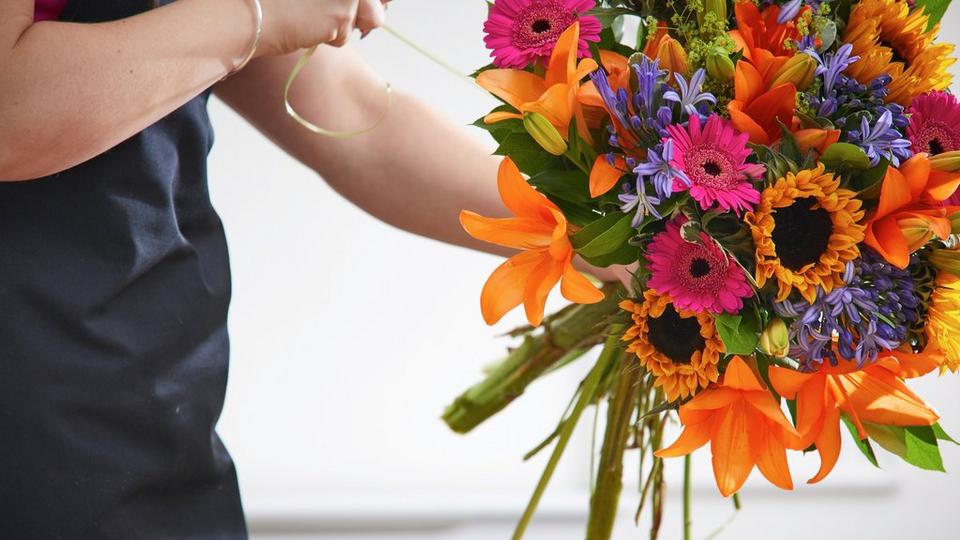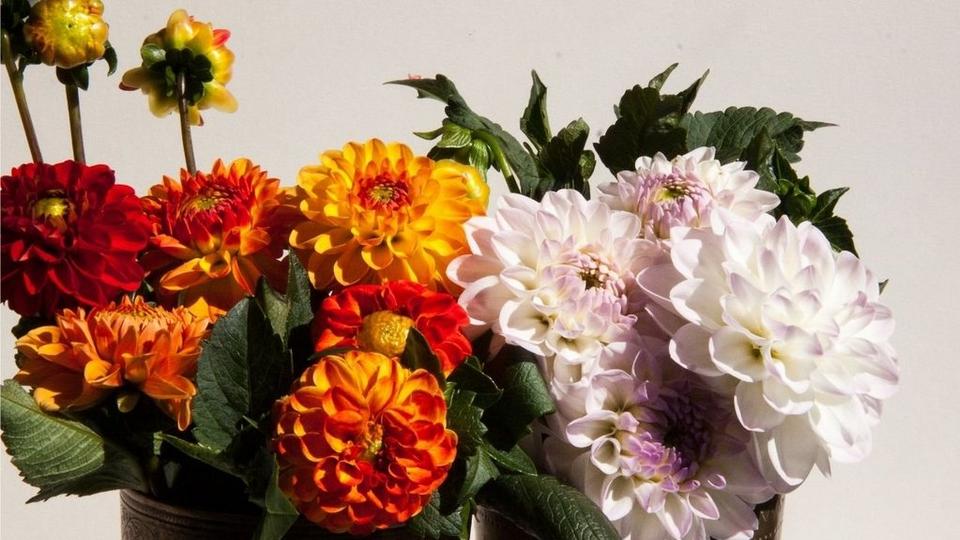Aster Flower Ultimate Guide: Meaning, Fact and Care Tips
Mysterious and ethereal, aster flowers are always a beautiful choice for your home, garden or as a surprise bunch of blooms to get in your partner's good books.
Their star-shaped flower heads make us want to whisper wishes into their petals, while their stunning purple hues complement any home decor.
Wondering how to care for and extend the life of these incredible flowers? We've featured all you need to know in this guide, from how to take your own aster cuttings to what the enchanting perennials mean and represent.
Aster flower meanings
Asters have a lively and magical backstory that justifies how they got their name, as the flower mainly plays a part in the Greek myth of the goddess Astraea.
It's said that the goddess was so sad that the earth had so few stars in the sky that she had a good cry about it. Her tears fell to the ground and up sprouted asters in their place! Their name comes from the goddess herself, as aster is the Greek word for star.
It's also believed that Virgo – that's right, the maiden that represents September's horoscope – created asters when she sprinkled stardust across the earth. Unsurprisingly, the aster is September's assigned birth month flower, which makes it the perfect choice for a bouquet for a loved one born in this early autumn month.
Whatever you believe, this flower definitely gives off mystical, celestial vibes that we just can't get enough of!
What do aster flowers represent?
Asters are thought to represent love, faith and wisdom. This makes them the perfect bloom perhaps for someone in your life that you look up to?
Different coloured asters also have different meanings:
-
Purple asters symbolise royalty and beauty – it's safe to say, these flowers could take the crown from other autumn bloomers.
-
Pink asters represent kindness and love – choose these for a partner or as a way of cheering up a friend.
-
White asters, like many flowers of the same colour, are considered to convey purity and innocence – they look stunning in bohemian themed bridal bouquets.
Why are asters also called Michaelmas Daisies?
Wondering where this other name comes from? Well, asters are considered to bloom in full by the 29th September, which happens to be Michaelmas Day.
Never heard of it?
Well, Michaelmas celebrates the archangel Michael and is considered to be one of the 'quarter days' of the year, close to a seasonal equinox or solstice, and traditionally the last day of the harvest season.
When do asters flower in the UK?
Asters are the perfect early autumnal bloom, as they offer a pop of colour between the months of late July and September, as the season starts to change. Asters are also perennials, which means that they emerge and flower every summer before disappearing back underground for winter.
How to take aster cuttings
There's maybe nothing more satisfying than taking cuttings from plants that you've grown with your very own blood, sweat and tears (okay, maybe we're being a little dramatic) that you can then feature in pride of place in your home.
Here's how to take cuttings that look great and still keep your main aster plant thriving:
Step 1 - Take a sharp knife and find a low spot on the stem.
Choose a point just below some of the lower leaves to cut.
Step 2 - Carefully, trim the stem to take a cutting of the aster.
It's best to cut at an angle and avoid snapping or bending the stem if you can, as this can prevent the plant from taking in water once it's been placed in a vase.
Step 3 - Remove any faded leaves and any that may sit below the waterline in your vase.
Keep three or four of the upper leaves intact to ensure the plant doesn't lose its life too quickly.
Step 4 - Continue until you have a large enough bunch of cuttings to enjoy.
Pop your flowers in a vase in your home or wrap them up and offer to a friend who needs cheering up.
It's recommended that when your aster first flowers you take cuttings and prune the plant to encourage more to bloom next year.
Much like when you've decided you no longer love your bob haircut and want to grow it out again (before changing your mind a day later) you need to get it trimmed regularly to encourage that growth!
Where to keep cut asters
If you've received a bouquet of these bewitching blooms – lucky you! – we recommend placing them in a cool and light space but not in direct sunlight. Change the water every other day and remove any leaves that fall off to keep everything clean and fresh.
You should be able to enjoy your asters for around seven to 14 days! Be sure to add that plant food to your vase water, if you receive some with your bouquet, to extend their vase life further.
Facts and uses for aster
Asters aren't just a pretty face. According to old wive's tales, these flowers have been used for everything from warding off serpents and evil spirits to predicting the weather.
Burn an aster leaf a day to keep the evil away
Snakes and evil spirits aren't things you want hanging around, right? So in Medieval times, someone came up with the ingenious idea of burning aster leaves to ward them off. It's thought that the leaves produced a scent that serpents and bad spirits weren't fans of, so they stopped coming around. Hey, if you're experiencing a string of bad luck you'll try anything!
They were thought to predict the weather
Asters are much like daisies and close their petals in the dark and gloom, which is why people thought they could predict rain, as their flower heads started to close up if the sky darkened. While this trick could suggest rain is coming, we think we'll stick with the Met Office.
Bees love them
Aster flowers are pretty important because bees that are still looking for pollen – when all other plants are winding down for the winter months – can drop by and enjoy them. Asters are said to represent the end of the bee season when the insects go dormant and are a sign of the changing weather and months.
Their leaves can be eaten like salad greens
While you probably won't throw your aster leaves into a bowl with some vinaigrette dressing, in some countries they are still consumed. They look good, can ward off snakes and keep hunger pangs at bay – there's nothing the aster can't do!
Types of aster flowers
The great news is that there's more than one variety of aster to enjoy! While many of us are drawn to the popular purple petalled variety, there are a few more to consider – nearly 180 species, in fact. We're not going to list them all here but instead have featured our top three.
Aster (Michaelmas Daisy)
This plant blooms in a pretty shade of purple, with a fan of petals around a bold yellow centre. It reminds us of your typical daisy plant but is an upgraded version, with vibrant colour and a long vase life.
Aster (Novae-Angliae)
This variety of aster is a bushier version of its daisy inspired counterpart and grows in vibrant shades of pink and deep purple. Aster Novae-Angliae looks more impressive in a garden than in a vase, making it a popular choice for those looking to create a focal point in their flowerbeds during autumn.
Snow Flurry Aster
You've likely guessed where this brilliant white aster flower got its name from but just to hammer it home, Snow Flurry Aster is called this because its flowers look like snowflakes amongst the greenery. The flower heads are similar in shape and size to your typical aster but look like they've had a run-in with your Mum's stain remover in the washing machine.
When to plant asters
It's recommended that you plant asters in mid to late spring, as this ensures they have plenty of time to take root and produce flowers in time for autumn.
You can plant them in pots to keep them contained or feature them in rows near your patio, where you'll enjoy these pretty blooms alongside your late summer fire pits and drinks with friends in the evening.
Asters can grow anywhere between 10cm and 2m tall, so bear this in mind when choosing where to plant these starry shaped flowers in your garden. Tall varieties are best for the back of the border and perfect to make a statement against the fence.
Asters do well in full or partial sun, as they love nothing more than to soak up all those warming rays and when it comes to soil, they thrive in well-drained areas.
The good news is asters are not high maintenance, so you don't need to worry about watering them all the time and they'll continue to do their thing.
We love the magical and mystical aster with its ties to Greek mythology and stunning blooms that are great in or outside your home. Take on these tips to care for yours, whether it's a cutting, a full bouquet or a feature in your garden.


